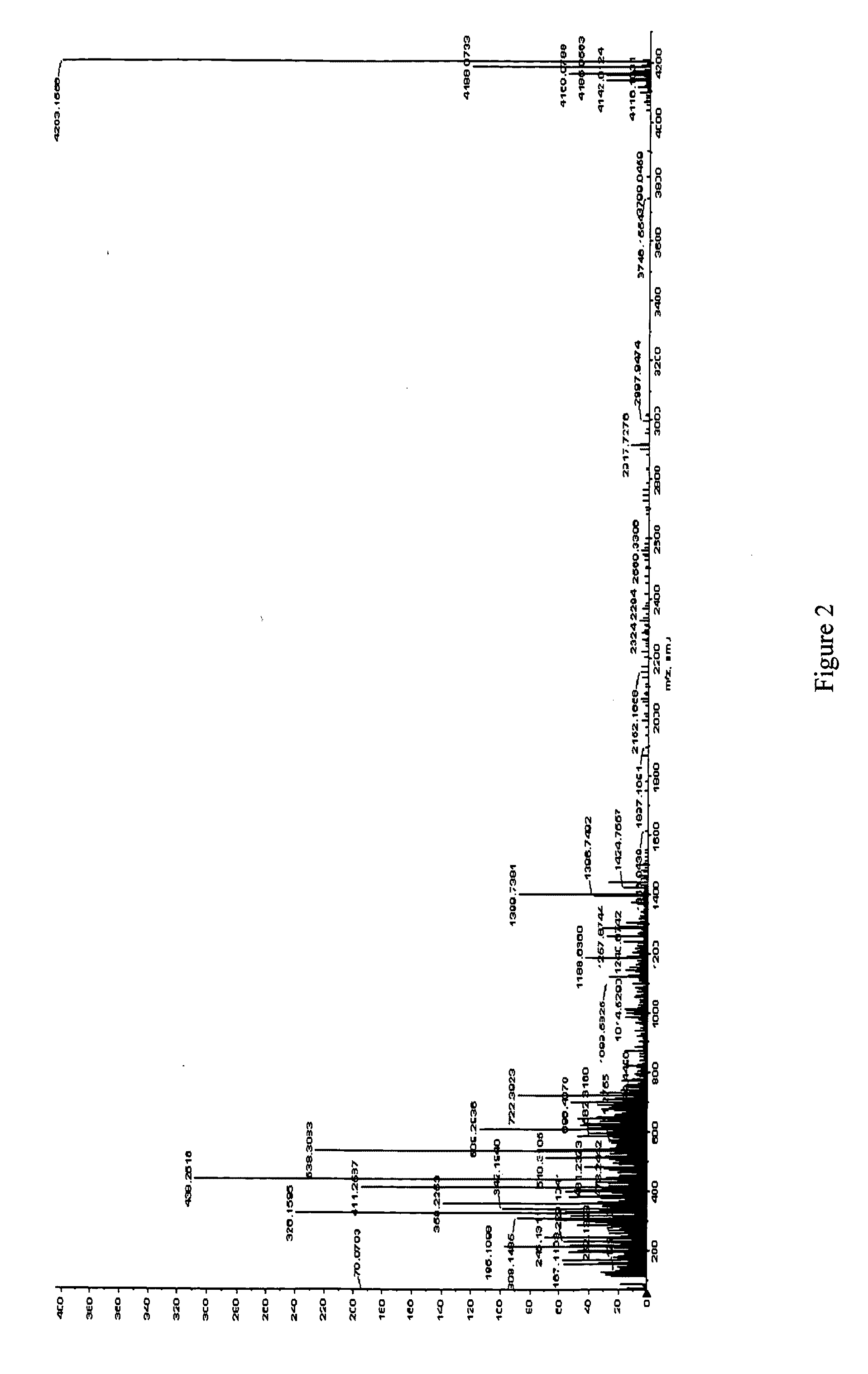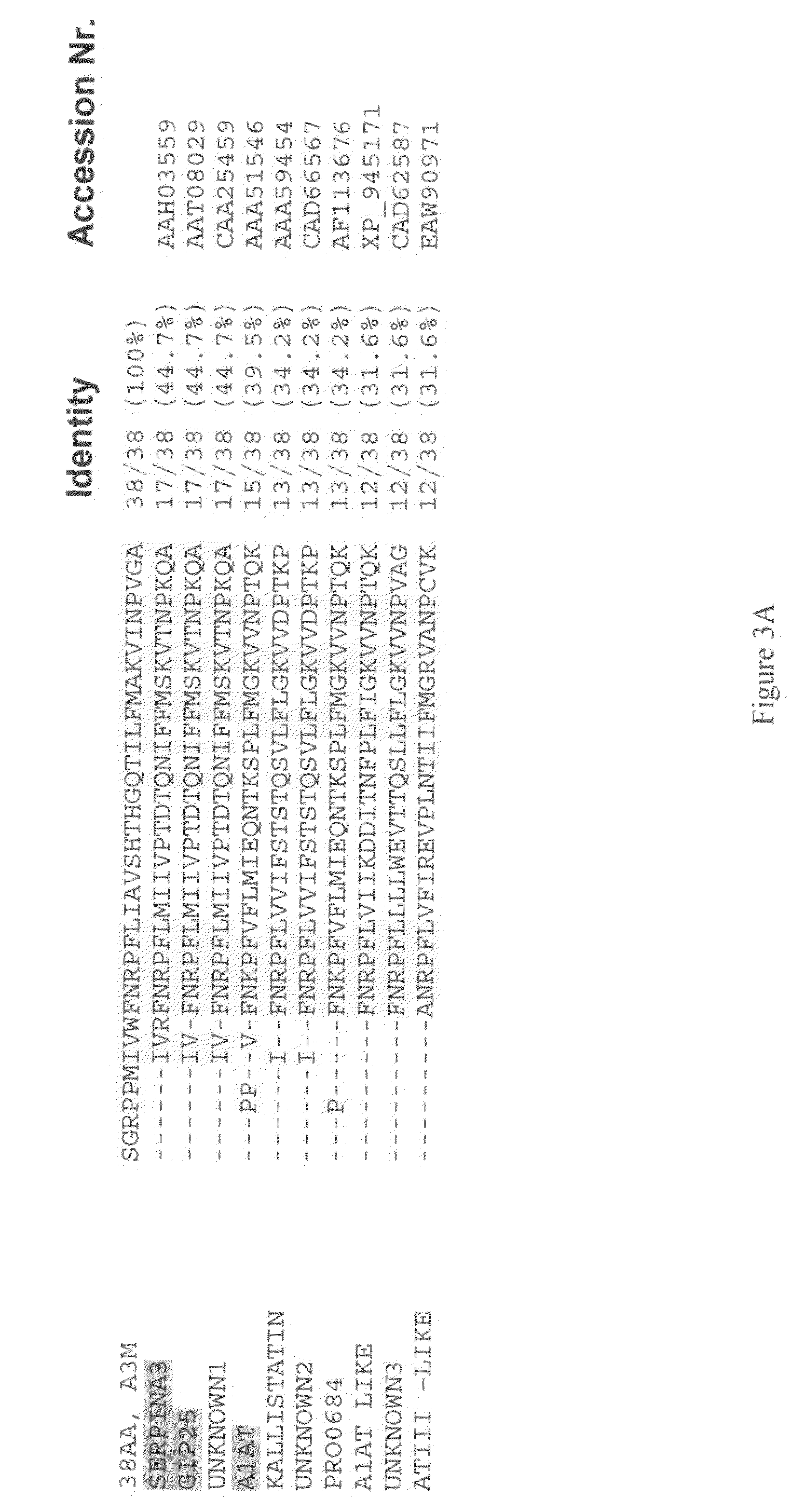Compositions and methods for diagnosis and treatment of type 2 diabetes
- Summary
- Abstract
- Description
- Claims
- Application Information
AI Technical Summary
Benefits of technology
Problems solved by technology
Method used
Image
Examples
example 1
Biomarker Identification in the Cohen Rat Model of Type 2 Diabetes
[0247]The Cohen diabetic (CD) rat is a well-known and versatile animal model of Type 2 Diabetes, and is comprised of 2 rodent strains that manifest many of the common features of Type 2 Diabetes (T2D) in humans. The sensitive strain (CDs) develops Diabetes within 30 days when maintained on a high sucrose / copper-poor diet (HSD), whereas the resistant strain (CDr) retains normal blood glucose levels. When maintained indefinitely on regular rodent diet (RD), neither strain develop symptoms of T2D.
[0248]Serum, urine, and tissue samples (including splenic tissue, pancreatic tissue, and liver tissue) were obtained from both CDr and CDs rats that were fed either RD or HSD for 30 days. The samples were flash-frozen and stored at −80° C.
[0249]Whole protein extracts were prepared for each of the 4 experimental conditions, utilizing 10 individual organs per group. Pancreatic tissues were processing using a mech...
example 2
Bi-Directional Immunological Contrasting and Generation of Monoclonal Antibodies
[0268]From the pancreatic extract protein profiles obtained by SDS-PAGE, obvious differences in the banding patterns were noted between CDr-HSD and CDs-HSD samples. Bi-directional immunological contrast was performed between these two samples. This technique involves injecting two pancreatic extracts from the Cohen diabetic rats to be contrasted separately into the footpads of an experimental animal (e.g. a Balb / c mouse). Following uptake and processing of the antigen at the site of injection by antigen presenting cells (APCs), the activated APCs migrate to the local lymph nodes (popliteal) to initiate an immune response. As these lymph nodes are located in each leg, they are anatomically separated from each other, which prevents mixing of antigen-specific lymphocytes at this point. Later in the immune response, these activated lymphocytes migrate from the local lymph nodes to the spleen where they becom...
example 3
Microarray Analysis of Gene Expression in Tissues from Cohen Type 2 Diabetic Rats
[0285]The microarray data were analyzed through Phase I and Phase II analyses. Phase I is based on the processed data from Gene Logic. Phase II corresponds to data analysis using GeneSpring GX. Additional criteria including statistics, signaling pathways and clustering were used for the analyses.
[0286]The microarray results from Gene Logic (Phase I) that were derived from comparisons of pancreatic total RNA of Cohen Type 2 Diabetes rats (CDs-HSD, CDr-HSD) were analyzed using MAS5.0 software from Affymetrix, Inc. The global gene expression analysis showed that there were 1178 genes upregulated in CDr-HSD and 803 genes were downregulated in compared to CDs-HSD. Many of these transcripts are involved in several signaling pathways related to Type 2 Diabetes such as insulin signaling, beta-cell dysfunction and lipid and glucose metabolisms. Also, several serpin family members (serine proteinase inhibitors) a...
PUM
| Property | Measurement | Unit |
|---|---|---|
| Volume | aaaaa | aaaaa |
| Volume | aaaaa | aaaaa |
| Volume | aaaaa | aaaaa |
Abstract
Description
Claims
Application Information
 Login to View More
Login to View More - R&D
- Intellectual Property
- Life Sciences
- Materials
- Tech Scout
- Unparalleled Data Quality
- Higher Quality Content
- 60% Fewer Hallucinations
Browse by: Latest US Patents, China's latest patents, Technical Efficacy Thesaurus, Application Domain, Technology Topic, Popular Technical Reports.
© 2025 PatSnap. All rights reserved.Legal|Privacy policy|Modern Slavery Act Transparency Statement|Sitemap|About US| Contact US: help@patsnap.com



